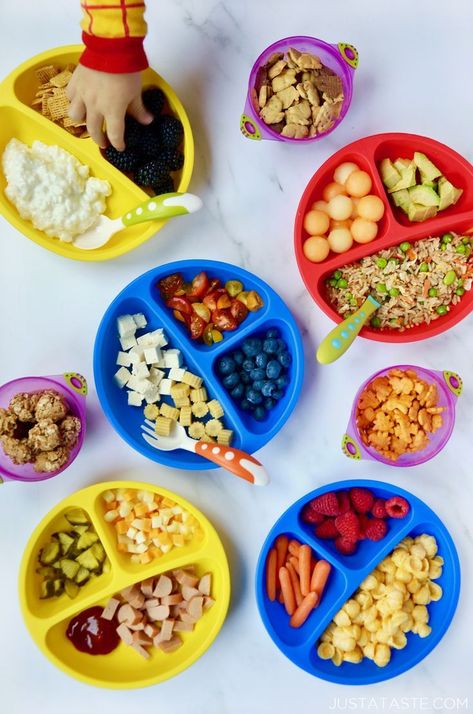How to make baby fat food
7 tasty high calorie foods for baby weight gain
Weight gain is a vital part of a baby’s development and many concerned parents want to incorporate the right types of food into their baby’s diet to enable a healthy long-lasting life. An average full-term Indian baby weighs 2.8 kg. According to the baby weight gain chart, the optimal weight for a baby ranges from 2.4 to 4 kgs. A few months after birth, a baby must consume foods that contain a high-calorie count, so that rapid weight gain can take place. Babies who are 6 months and older should ideally consume around three meals per day along with two snacks each day. Baby food recipes to gain weight must include all three dietary categories: proteins, fats or lipids and carbohydrates. These components should be given in varying amounts; a meal should contain 15 percent protein, 30 percent fat and 55 percent carbohydrate.
Also read Are Probiotics Safe for Babies? What to Know Before Feeding Them to Your Child.
Growth percentiles can be used to measure your baby’s weight gain through each month. Baby weight gain can be measured using the growth percentile chart which will give a range of weight readings for each month of the baby’s weight gain and development. The range can tell you if your baby is within the average weight of a baby their age. The type of food your baby will eat can affect the way they gain weight. You must pay careful attention to the food they consume. The following foods are wonderful additions to your baby’s diet as they are packed with all the nutrients your growing baby needs to put on weight. So if you want to know how to make baby gain weight fast, use these baby food recipes to gain weight!
1. Breast Milk
From 1 month to 4 months, a baby is primarily breastfed milk. The calcium component in milk increases the bone density in the baby’s limbs.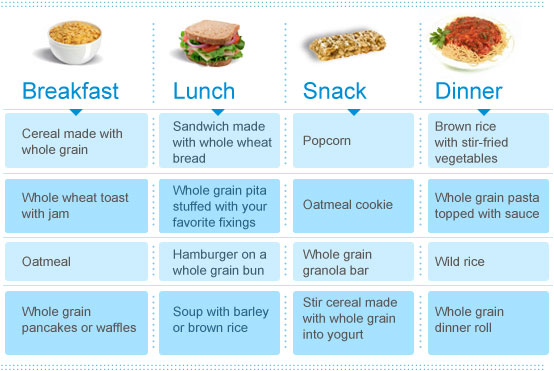 It is important to breastfeed your baby as it contains nutrients that can help a baby gain weight and meet their average growth requirement. Breast milk regularly changes its composition and consistency to meet the baby’s needs. Babies who are regularly breastfed have shown a consistent growth pattern in the growth percentile chart, and are usually in the 90th percentile range.
Also read our blog on How to Help Your Child Grow Taller Naturally?
It is important to breastfeed your baby as it contains nutrients that can help a baby gain weight and meet their average growth requirement. Breast milk regularly changes its composition and consistency to meet the baby’s needs. Babies who are regularly breastfed have shown a consistent growth pattern in the growth percentile chart, and are usually in the 90th percentile range.
Also read our blog on How to Help Your Child Grow Taller Naturally?
After the 5th month, the baby will transition to semi liquid-based food, so you can start including baby food recipes to gain weight. The best food to give your baby at this age would ideally be mashed or pureed fruit. The fruit of choice would either be bananas or apples. Apple contains a significant amount of fiber which will prevent constipation. Applesauce provides Vitamin C which is required for immune sustenance and will help the baby absorb iron more efficiently. Iron is an element in the red blood cells which transports oxygen to cells. Mashed bananas contain large amounts of potassium, which can help normalise heart functions and muscle contractions. One small banana or apple contains 90 calories, making them one of the best high-calorie foods for baby weight gain. Babies can typically eat these soft fruits for breakfast or as a mid-morning snack. Following a comprehensive baby food chart can help you decide the right quantities of these fruits to feed your baby and at what time.
Iron is an element in the red blood cells which transports oxygen to cells. Mashed bananas contain large amounts of potassium, which can help normalise heart functions and muscle contractions. One small banana or apple contains 90 calories, making them one of the best high-calorie foods for baby weight gain. Babies can typically eat these soft fruits for breakfast or as a mid-morning snack. Following a comprehensive baby food chart can help you decide the right quantities of these fruits to feed your baby and at what time.
Download the mfine app and get your first consultation FREE*
With mfine, get Medical Care
that is quick, convenient and
accurate.
Get your first consultation for FREE
Android
iPhone
3. Mashed Lentils
Lentils like urad dhal or khichdi along with boiled carrot and potato is one of the baby food recipes to gain weight. It is essential that your baby eat the right proportion of vegetables to maintain a fully-functioning digestive system. Lentils have a high protein content. They also include EFA (Essential Fatty Acids) which is a type of fatty acid that will improve brain development. They are known to strengthen teeth and bones as well. You can use our baby food recipes for 6 month olds to discover new ways to cook lentils for your baby.
Also read our blog on How Can I Help My Baby Learn to Walk?
Lentils have a high protein content. They also include EFA (Essential Fatty Acids) which is a type of fatty acid that will improve brain development. They are known to strengthen teeth and bones as well. You can use our baby food recipes for 6 month olds to discover new ways to cook lentils for your baby.
Also read our blog on How Can I Help My Baby Learn to Walk?
The yolk of a hard-boiled egg is an ideal way for a baby to gain weight. The yellow yolk contains high levels of cholesterol, which increases the calorie-building muscle. A higher number of calories per serving will drastically improve your baby’s weight gain. It will also make the baby stronger and healthier. Egg yolks are rich in Vitamin D, B6, and B12. These vitamins will help the baby gain weight faster in a shorter period. In the first few months after birth, the baby will need to gain 1 ounce per day. The yolk has more beneficial fat building abilities as compared to the albumen. It is also a great source of Omega-3 fatty acids as it includes multiple blood lipids and helps maintain higher cholesterol levels which will show a higher reading on the baby weight gain chart. In a nutshell, egg yolks are one of the top high-calorie foods for baby weight gain that will help boost your child’s health. Our baby food recipes for 8 month olds includes easy ways to prepare eggs and help baby gain weight faster.
It is also a great source of Omega-3 fatty acids as it includes multiple blood lipids and helps maintain higher cholesterol levels which will show a higher reading on the baby weight gain chart. In a nutshell, egg yolks are one of the top high-calorie foods for baby weight gain that will help boost your child’s health. Our baby food recipes for 8 month olds includes easy ways to prepare eggs and help baby gain weight faster.
Fish is a great food for baby weight gain and can be included in your baby food recipes for 10 month olds. It is rich in Omega-3 fatty acids which increases the neural pathways in the brain and the blood lipid content. The fats from the fish get stored in the cells which increases weight. However, recent studies have shown an increased level of mercury production in fish, so pick varieties that are wild-caught or typically have lower mercury levels. Salmon is known to contain the lowest mercury content.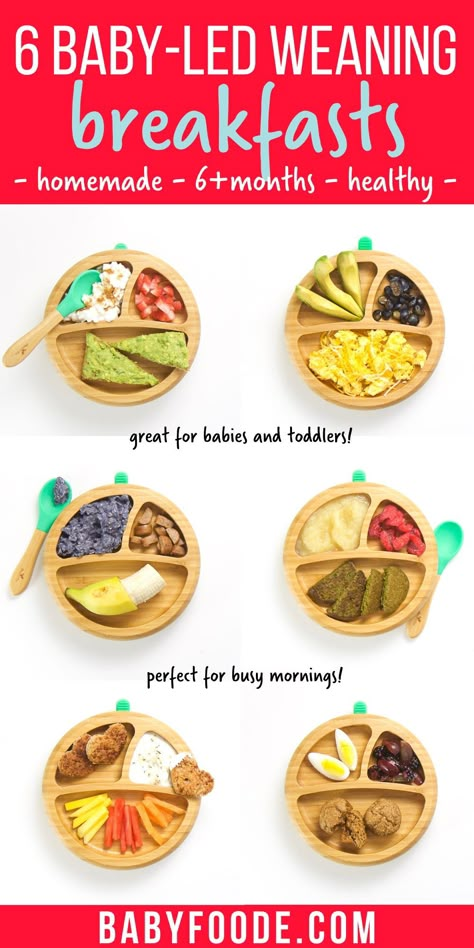 A small serving of fish once in a while is good for the baby’s overall health and help baby gain weight faster.
A small serving of fish once in a while is good for the baby’s overall health and help baby gain weight faster.
Cheese or paneer can help baby gain weight faster. 50g of cheese is equal to two whole glasses of milk, making it one of the best high-calorie foods for baby weight gain. Babies above eight months old can digest solid and finger food, so you can start feeding them these foods when they reach this age. You can give cheese or paneer to your baby as a delicious snack at any time of the day or mix it with a leafy green salad. Paneer is rich in Vitamin A, Vitamin D, and Vitamin B12 and is also one of the best calcium-rich foods for babies. In paneer, the protein, casein, is broken down, so babies with lactose intolerance are able to digest it easily.
7. Butter or Ghee
Butter or ghee (clarified butter) is a central component in a high-fat diet for weight gain in babies. The butter must be unsalted because a high salt content could lead to high blood pressure. Since a baby’s taste buds are still undeveloped at this stage, introducing salt to them until they are older is not advisable. Butter is the most abundant source of fat and has all the essential fatty acids. Babies that lie in the 25th percentile range in the growth percentile chart are required to eat more food with butter to increase their weight. The consumption of butter must be limited to one teaspoon to avoid abnormal baby weight gain.
You can utilize different high-calorie foods for baby weight gain in different proportions to create a balanced diet. However, don’t force your child to eat certain foods for the sole purpose of gaining weight. Weight is a variable factor and can differ from baby to baby. There are several environmental aspects that can also affect a baby’s weight. Always check with your paediatrician before introducing new foods into your baby’s diet.
The butter must be unsalted because a high salt content could lead to high blood pressure. Since a baby’s taste buds are still undeveloped at this stage, introducing salt to them until they are older is not advisable. Butter is the most abundant source of fat and has all the essential fatty acids. Babies that lie in the 25th percentile range in the growth percentile chart are required to eat more food with butter to increase their weight. The consumption of butter must be limited to one teaspoon to avoid abnormal baby weight gain.
You can utilize different high-calorie foods for baby weight gain in different proportions to create a balanced diet. However, don’t force your child to eat certain foods for the sole purpose of gaining weight. Weight is a variable factor and can differ from baby to baby. There are several environmental aspects that can also affect a baby’s weight. Always check with your paediatrician before introducing new foods into your baby’s diet.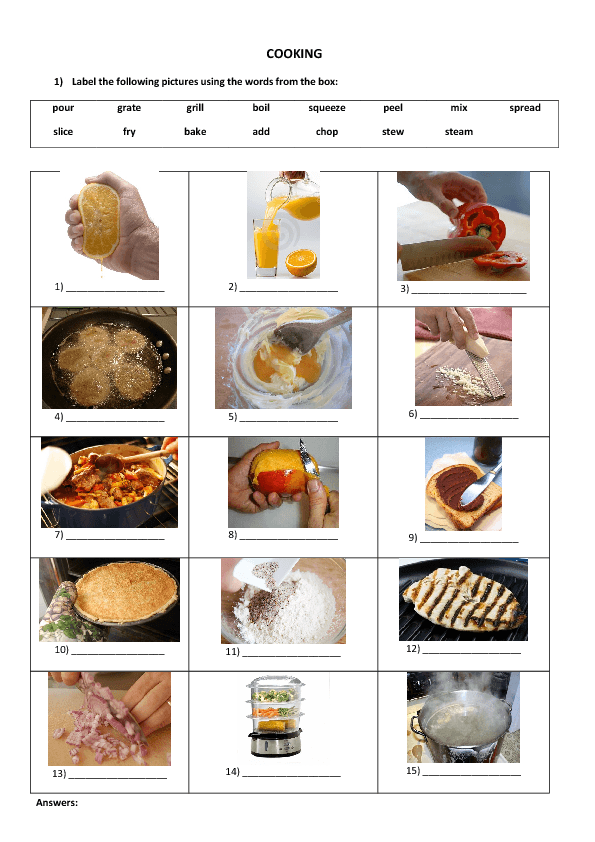 If you are still wondering how to make baby gain weight fast, don't hesitate to reach out to a pediatrician. Download the mfine app and book an instant consultation with your city's top pediatricians!
If you are still wondering how to make baby gain weight fast, don't hesitate to reach out to a pediatrician. Download the mfine app and book an instant consultation with your city's top pediatricians!
15 Foods to Make Baby Gain Weight – Cafe Baby®
- by Jeannie Marrugo
- Mar 10, 2022
If you need to add foods to Baby’s diet to help them in gaining weight, be sure to add these to your grocery list or to your next Café Baby order. Sometimes every extra calorie counts in their tiny bellies.
If your child needs to be on high calorie fortified infant formula or breast milk, please talk to your pediatrician first. You need to know the right recipe to prevent an excess intake of nutrients to prevent constipation and dehydration.
1. Avocado
Avocados are a sugar-free healthy choice that contributes 2.5 grams of monounsaturated fat and 0.5 gram of polyunsaturated fat per 25-gram serving to Baby's diet.
2. Kidney Beans
Kidney beans are a plant-based protein, or non-heme iron source, rich in most B-vitamins, fiber and omega-3 fatty acids. They also contain two that are commonly deficient in babies: folate and iron.
They also contain two that are commonly deficient in babies: folate and iron.
3. Eggs
Not only are eggs a prime source of the best-quality proteins after breast milk, but one egg contains thirteen essential minerals like copper, zinc, selenium, calcium, iron, cholesterol, fat, fatty acids, and vitamins like vitamin D, B12, E, choline and folate.
4. Bananas
Bananas are loaded with nutrients like potassium, calcium, magnesium, iron, folate, niacin, and vitamin B6 and can help babies gain weight by increasing calorie density.
5. Mango
Mangoes are rich in fibres and digestive enzymes, which means Baby won't have any trouble going number two. Mangoes are very low in fat but contain lots of good calories which can help Baby gain weight.
6. Lentils
Lentils are low in sodium and saturated fat, and high in potassium, fiber, folate, and plant chemicals called polyphenols that have antioxidant activity.
7. Ground Meat
Did you know it's important to add iron- and zinc-rich foods to Baby's diet? At about six months of age, Baby starts to run out of their natural iron stores that they were born with. Ground meats are an important source of heme iron, which is more easily absorbed into the body than non-heme iron (plant-based protein).
Ground meats are an important source of heme iron, which is more easily absorbed into the body than non-heme iron (plant-based protein).
8. Whole Milk Yogurt
The best option is plain, unsweetened, pasteurized yogurt (regular or Greek) made from whole milk and containing "live cultures." Yogurt made from whole milk is best for Baby because they need the calories and fat in full-fat dairy products.
9. Full-fat Cottage Cheese
Cottage cheese has plenty of healthy fats and protein, plus some B vitamins, calcium, selenium, and zinc. To avoid loads of salt, look for options that are:
- Pasteurized
- Low in sodium (ideally less than 100mg sodium per serving)
- Made from whole milk
- Without added preservatives or sugars
10. Mashed Sweet Potato
Sweet potatoes provide nothing but good calories, making it a healthy food option for Baby. The high amount of calories in sweet potatoes help in weight gain and physical development in children.
11. Mashed Potatoes
Potatoes might be mostly white, but that doesn’t mean they don't contain nutrients. They are are a source of fiber-rich carbs, which are one of the best sources of fuel for Baby’s brain.
12. Mashed Butternut Squash
The Omega-3 fats that are found in butternut squash are present in the form of alpha-linolenic acid, and this is what helps to reduce inflammation.
13. Peanut or Almond Butters
Nut butters can be a source of fibre, protein and healthy fats, as well as minerals such as magnesium, calcium, iron and vitamin E. If you're worried about food allergies, check out our blog series about starting solids and allergies.
14. Fresh Goat Cheese
Fresh goat cheese has lots of protein and healthy fats, plus calcium, copper, iron, and vitamins A, B2, and B6—essential nutrients to power your baby’s growth. When selecting goat cheese for Baby, look for a cheese that is:
- Pasteurized
- Low sodium (less than 100mg per serving)
- Whole fat
15. Cooked Quinoa
Cooked Quinoa
Quinoa is a good source of calcium, iron, potassium and magnesium. It's also a great source of Omega 3, 6, 9 fatty acids, which are good for Baby's brain and eye development.
View this post on Instagram
A post shared by Cafe Baby® Fresh Baby Food (@cafebabytogo)
Sources:
https://patient.uwhealth.org/healthfacts/343
https://solidstarts.com/foods/kidney-beans/
https://parenting.firstcry.com/articles/banana-for-babies-when-to-introduce-health-benefits-and-more/#How_Much_Banana_Can_a_Baby_Eat_in_a_Day
https://parenting.firstcry.com/articles/mango-for-babies-health-benefits-and-recipes/#Nutrition_Facts_of_Mango
https://www.hsph.harvard.edu/nutritionsource/food-features/lentils/
https://newwaysnutrition.com/babies/meat-baby/
https://solidstarts.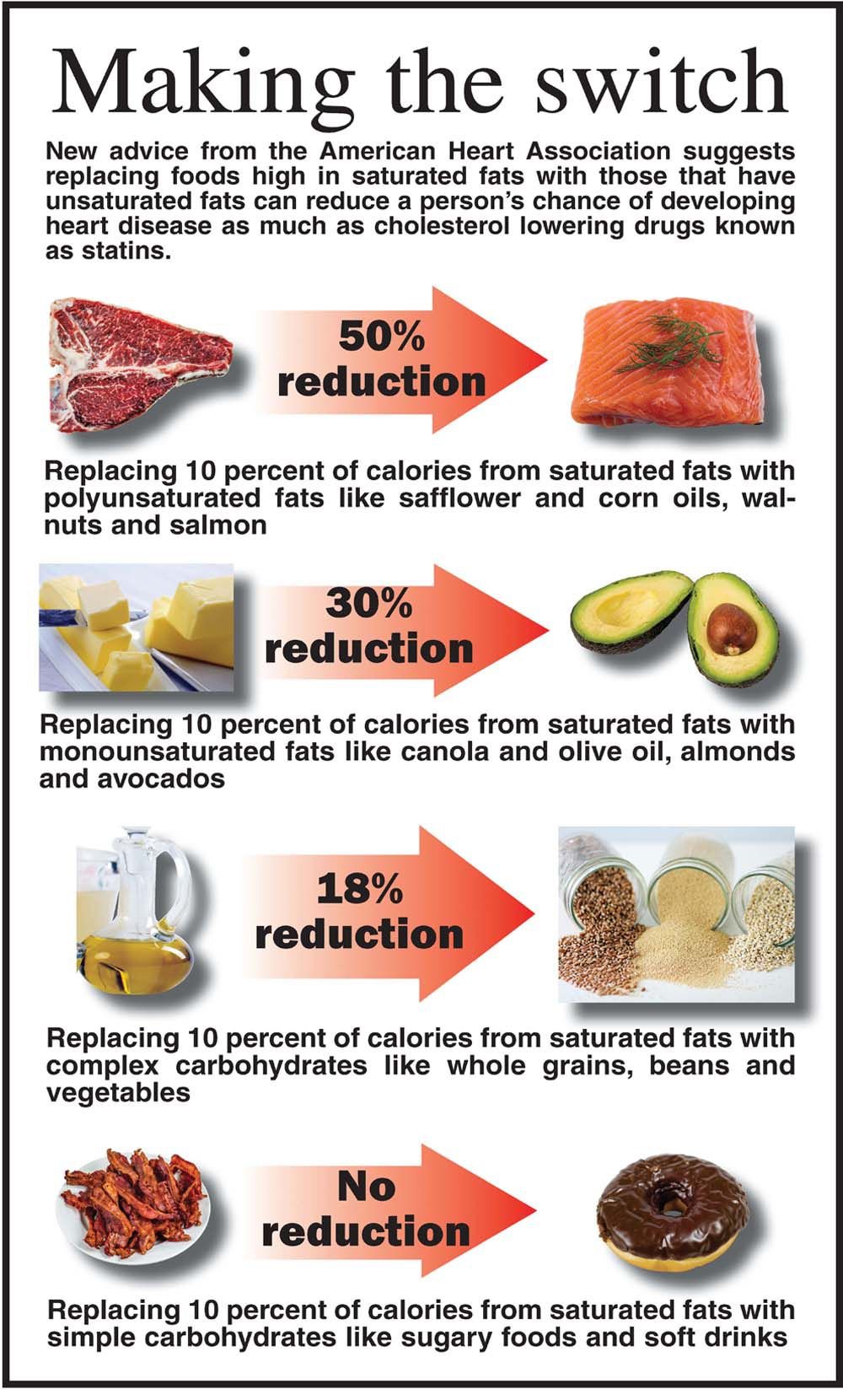 com/foods/cottage-cheese/
com/foods/cottage-cheese/
https://parenting.firstcry.com/articles/sweet-potato-for-baby-benefits-and-recipes/#Nutritional_Value_of_Sweet_Potato
https://parenting.firstcry.com/articles/butternut-squash-for-babies-health-benefits-and-recipes/#Nutritional_Value_of_Butternut_Squash
https://www.whattoexpect.com/first-year/baby-feeding/when-can-babies-eat-potatoes#benefits
https://www.srnutrition.co.uk/2021/04/peanut-butter-for-babies-when-to-introduce-it-and-which-type/
https://solidstarts.com/foods/goat-cheese/
https://www.momjunction.com/articles/is-quinoa-safe-for-babies_00120055/
Is it possible to add oil to baby food
— Elena Viktorovna, why add vegetable oil to baby food?
— Fats play a very important role for the body of both a child and an adult.
Some functions of lipids
— The properties of fats depend on the fatty acids in their composition.
— Saturated fats are a good source of energy and cholesterol, which is also needed for the body to function. But unsaturated, in particular, arachidonic (ARA, Omega-6), eicosapentaenoic (EPA, Omega-3) and docosahexaenoic (DHA, Omega-3) acids are very important - they are part of the phospholipids of cell membranes and are involved in the formation of eicosanoids, and therefore, they are of particular importance for the immune and nervous systems.
But unsaturated, in particular, arachidonic (ARA, Omega-6), eicosapentaenoic (EPA, Omega-3) and docosahexaenoic (DHA, Omega-3) acids are very important - they are part of the phospholipids of cell membranes and are involved in the formation of eicosanoids, and therefore, they are of particular importance for the immune and nervous systems.
— What are the health benefits of vegetable and butter?
- Children under one year old need oil in small quantities. This is an additional source of energy and components that we are talking about. But the main source of fat for the baby will be breast milk or an adapted formula.
— Oil in optimal amounts is very beneficial for digestion. It promotes the absorption of fat-soluble vitamins, trains the pancreas; the fat component of food stimulates contractions of the gallbladder. Therefore, in the optimal amount of fats are needed in baby food.
— What can be the harm of vegetable and animal fats up to a year?
- Their excess in the diet is dangerous, it overloads the biliary tract and pancreas: their enzymatic activity is formed and increases gradually, the baby's body simply cannot cope with the processing of fats.
— How are the fatty acids in infant formula different from those in vegetable oil and butter?
- Formula manufacturers are trying to adapt the fat component of formulas and bring it closer to the fat component of human milk. For example, there is little linoleic acid in cow or goat milk compared to breast milk: it is added from vegetable fats. Palmitic fatty acid is taken from vegetable palm oil or milk fat from cow or goat milk. Also, the mixtures are additionally enriched with Omega-3, -6 polyunsaturated fatty acids.
— According to doctors, are there any special indications for adding oil to children's diets?
— Even with insufficient body weight and deficiencies, one must be careful with fats and not exceed their allowable norm in the child's diet, including in the form of oil. Often, parents believe that fat improves the child's stool: supposedly makes it softer. This belief is wrong. As we have already said, excess fat can lead to a malfunction of the biliary tract, which can affect the nature of the stool.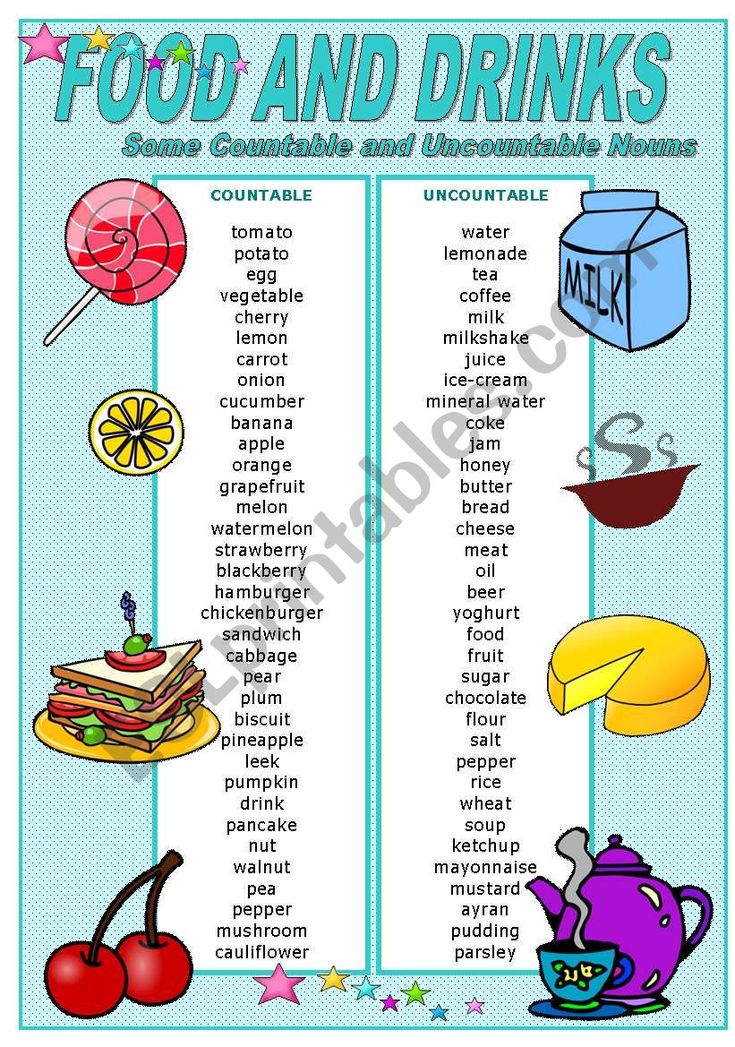
— Is it true that oil improves the taste of complementary foods?
- Butter, especially butter (milk fat), significantly improves the taste of food. But this perception of the product is more related to the taste preferences of the parents. Taste receptors in children develop gradually and may react differently to food than adults.
— When to add oil to complementary foods?
— According to the National Program for Optimizing the Feeding of Children in the First Year of Life, it is allowed to give oil as early as 4-6 months, that is, with the start of the transition to solid food. But complementary foods themselves do not start with vegetable or butter. The first complementary foods are cereals or vegetable purees in their pure form. After the baby gets to know them, you can add butter to porridge, vegetable oil to vegetables.
It is better to start with vegetable oil because it has less saturated fat and is non-dairy. The introduction of dairy products is postponed to a later period.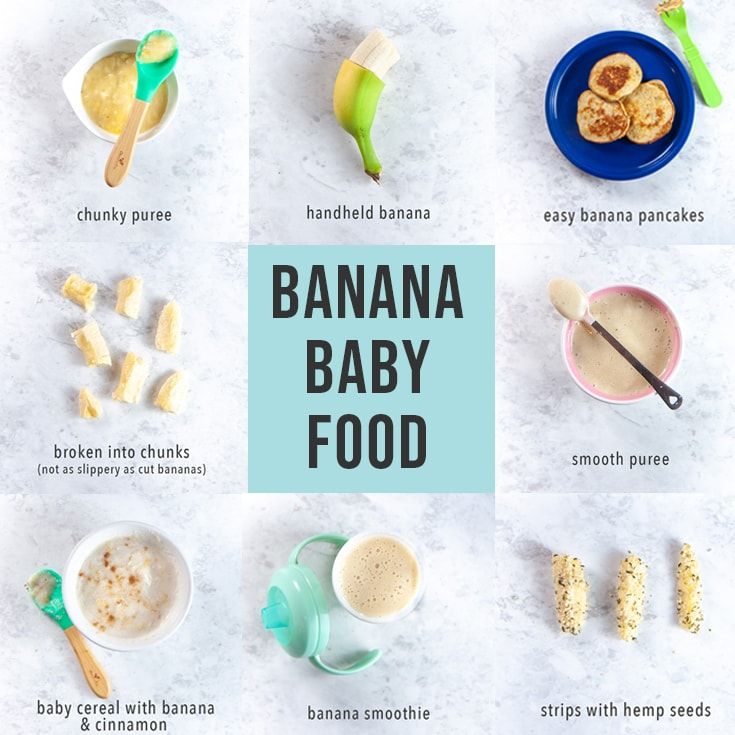
If your child is obese, overweight, or has bile duct problems, you can delay the introduction of oil into complementary foods.
How much oil to give a baby up to a year
- 4-5 months: vegetable oil - 1-3 g, butter - 1-4 g.
- 6-7 months: vegetable oil - 5 g, butter - 4 g.
- 8-12 months: vegetable oil - 6 g, butter - 5 g.
Digestive problems in infants with too early introduction of oil
- Violation of the stool.
- Overloading of the pancreas and biliary tract.
- Fat indigestion.
- "The wrong" fats can block other substances, such as calcium.
- Loading the body with cholesterol.
- Violation of the supply of other ingredients.
- Excessive weight gain.
— What kind of oil to feed the baby?
- Butter, sunflower or olive oil is the best option for complementary foods. Other oils are not recommended for children. It is necessary to be guided by the following principle: the child should eat what his parents often use. These oils are also the most balanced in terms of the composition of saturated and unsaturated fatty acids.
It is necessary to be guided by the following principle: the child should eat what his parents often use. These oils are also the most balanced in terms of the composition of saturated and unsaturated fatty acids.
— What to look for when choosing a product?
— Trust in the manufacturer is important. Choose an oil that is known and used in your family. Product quality is compliance with GOST, satisfactory results of inspections by Rospotrebnadzor.
- If you can find a product for children, then it is better to purchase it. Butter for children is produced taking into account all the requirements for baby food.
- Is there an allergy to oil?
- As with any food component, an allergy can also occur to oil, since it contains traces of proteins from the main raw material. It is for the prevention of violent reactions that a phased acquaintance with complementary foods and the gradual introduction of oil are recommended. If a reaction develops with the use of oil, an allergy can be suspected. Then, after removing it from the diet, the symptoms usually go away.
Then, after removing it from the diet, the symptoms usually go away.
If a child is allergic to cow's milk protein, dairy products, including butter, are not introduced to him. You need to use vegetable oils. Butter is given after the expansion of the milk diet. Sometimes there is an allergy to sunflower oil: then a replacement is selected for it, for example, olive oil. If an allergy develops to it, choose a different type of oil.
Fat is a very important ingredient in baby food. When compiling a baby’s diet, it should be borne in mind that oil may already be added to commercially produced complementary foods. Oil can be gradually introduced into homemade complementary foods in the amount allowed by the National Infant Feeding Optimization Program. But you should always remember that in the first year of life, the main source of fat for a child is breast milk or an adapted mixture.
* Breast milk is the best food for babies. WHO recommends exclusive breastfeeding for the first 6 months of a child's life and continued breastfeeding after complementary foods are introduced until the age of 2 years. Before introducing new products into the baby's diet, you should consult with a specialist. The material is for informational purposes and cannot replace the advice of a healthcare professional. For feeding children from birth.
Before introducing new products into the baby's diet, you should consult with a specialist. The material is for informational purposes and cannot replace the advice of a healthcare professional. For feeding children from birth.
4-7 year old child – Tarkvanem ‹ Nutrition – Tarkvanem
Main page / Nutrition / 4-7 year old child
Side navigation
As the child grows older, he becomes more independent. This is expressed in his eating habits and food choices. Certain food preferences have formed, he wants to choose more himself, decide what he will eat.
The energy and nutrient requirement per kilogram of body weight for a child is still very high, which on the other hand means careful menu planning to get everything you need from food.
From soft drinks, potato chips, sweets, buns and cakes, the child receives a lot of empty energy, which is enough or too much to meet the energy needs, but at the same time, he is left without other foods (fruits and vegetables, bread, milk , fish, etc. ), which are needed to obtain proteins, fatty acids, vitamins and minerals necessary for life.
), which are needed to obtain proteins, fatty acids, vitamins and minerals necessary for life.
Dietary recommendations for children over 2 years of age are similar to adults, but because children have lower energy requirements, the recommended amount of food also decreases proportionately.
Meals
Children should have 3 main meals and 1-2 snacks per day.What kind of food and how many times to give at home depends on the time the child spends in the child care facility. The body needs to be regularly provided with the necessary amount of energy, so it is important to stick to daily meals.
Breakfast is the most important meal of the day - it supplies the body with energy so that the child can start playing or learning. If the child goes to kindergarten, weekday breakfasts must be adapted according to whether the child eats breakfast in the garden and what time he eats it. Breakfast does not need to be eaten immediately after waking up, but it is useful to have breakfast within an hour.
Snacks should be minimally processed (eg fresh or dry fruits and berries, vegetables, unflavored yogurt and cottage cheese, bread, juice, oatmeal, sandwiches). Sweets, crackers, cookies, soft drinks, juice drinks, ice cream, etc. are not suitable as snacks. Even one candy or cookie between meals can ruin a child's appetite for the whole day. Do not give your child food as a prize or consolation, or if the child is bored.
Lunch and dinner can be heavy, especially lunch . Soups and a slice of bread with soup go very well, as well as a dessert using a minimum amount of sugar, or even a small second. The younger the child, the more you need to use stewing-boiling in cooking his food. Perfect for a variety of casseroles. Since children want to see what ingredients food is made of, teaching a child to eat mixed dishes from infancy can hide vegetables in them that children do not really like. For dinner, a dense vegetable salad is suitable, in which you can add an egg, cheese, fish, meat, homemade cheese, or something else. If the child eats properly in the garden, the food offered at home should not be very energy intensive.
If the child eats properly in the garden, the food offered at home should not be very energy intensive.
Dinner should be a specific time when the family eats together and where they can talk about the day's events and be together (rather than watching TV or a computer screen at the same time). Here you can discuss the menu for the next day, as well as prepare for the weekend.
Like adults, all children are different. Every child has favorite foods, as well as those that they do not like at all. Knowing the preferences of children, the child can slowly teach him to eat those foods that he usually does not eat. To do this, you can hang on the refrigerator a list of products that the child must consume during the day. In this case, it is convenient to track the choice of products and teach the child healthy eating.- A child should be taught to eat right and healthy from an early age. Habits formed in childhood often influence the choices we make later in life.
 Some children are quite selective in terms of what he eats and what not; It is important that you, as a parent, be an example to your child and encourage and support healthy eating habits.
Some children are quite selective in terms of what he eats and what not; It is important that you, as a parent, be an example to your child and encourage and support healthy eating habits. - Young children in their food preferences are guided by two main factors - whether they are familiar with food and the taste of food (sweetness). Therefore, new products must be introduced carefully and in small quantities, leading by example. Getting used to new foods takes time. If you do it carefully and in a playful way, the children will be very interested.
- The more natural flowers will be presented on the plate, the more beautiful and appetizing the dish will be, the more it will contain various essential nutrients.
- When eating, the child's mood and surroundings (for example, whether the TV is playing or there are guests) are important, as well as whether the child is hungry.
- For eating, it is imperative to set aside time to enjoy food. When eating together with the family, the child will eat faster, the example of parents is important from early childhood.
 Enjoy each other's company while eating.
Enjoy each other's company while eating. - Appearance and correct food temperature are important for a child. The child will eat with great appetite if he sees what ingredients the food was prepared from. Try different foods and cook them in different ways to ensure food variety and availability of different nutrients.
- Teach your child to choose foods from different food groups so that he understands the diversity of food. Give your child the opportunity to choose their own food from suitable foods: this or that fruit, various grains, various vegetables, etc. Teach children to eat plenty of vegetables from an early age.
- Offer water instead of juice to quench your thirst.
- A child should never be scared about food. Food is not a means of punishment or reward. Do not force the child to eat, rather attract. If you force a child to eat, it greatly affects the psyche and behavior of the child and can leave a negative imprint on his entire subsequent life.
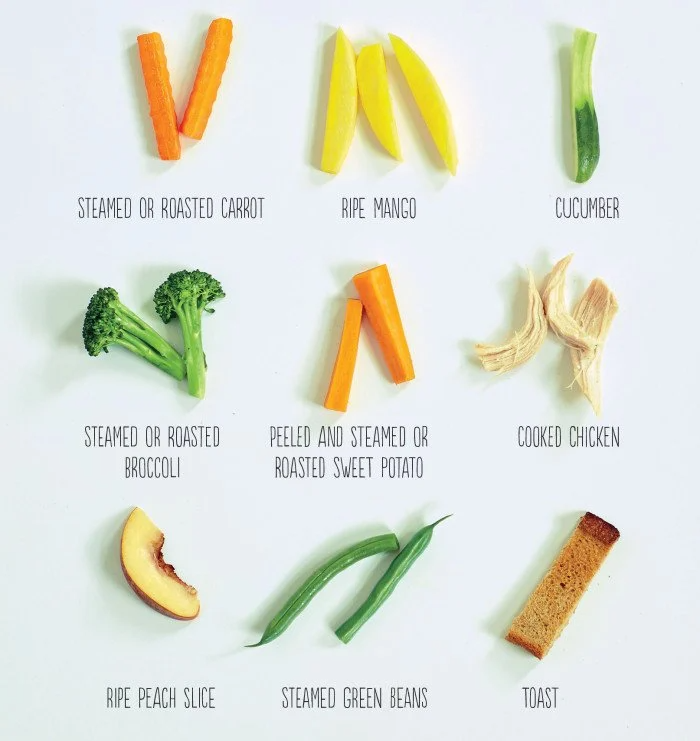
The most important child nutrition keywords:
- example
- joint meal
- availability of suitable food
- explanatory work
- time
- choice and decision making
- An example is one of the factors that will begin to shape the nutrition of a young child. The younger the child, the more influence on his choice of food is the example of parents and siblings. As the child matures, friends and the environment become more influential.
- A child’s eating habits are shaped by what food choices are available to the family (including the child) (both financially and based on the parents’ knowledge), how meals are organized at home, etc.
- Many children aged 4-7 go to kindergarten, and often spend time at home only in the evenings or on weekends. These meals should form a conscious choice. Children can discuss with children and direct their nutritional wishes.
Children grow in periods, which means that there may be times when the child eats too little, and there are periods when he eats more.
- It is useful to ensure that food intake and energy expenditure are balanced.
- If the child is very active, he should eat more.
- If the child seems to be eating too little or too much, keep a food diary - for about a week, write down everything that and how much the child ate and drank.
- Often it turns out that the problem is not in the amount eaten, but in the choice of food. After all, you can get as much energy from a couple of candy cookies as from a good portion of soup.
- It is unwise to immediately grab a jar of vitamins and minerals, you should reconsider nutrition - sufficient, balanced and varied nutrition will provide the necessary substances.
- The only exception is vitamin D, which all children should receive as a dietary supplement.
- If a child has access to a varied and balanced diet, he grows and develops according to his age, there is no cause for concern. If parents still feel that the child may not be getting all the necessary nutrients in sufficient quantities, from time to time blood tests can be done by a doctor to check the health.

- Candy or biscuits should never be given to children as a consolation, reward, or dispersal of boredom - on a subconscious level, this may affect his eating habits in the future. Avoid bringing sweets (candy, cookies) home and keep them in a conspicuous place. Instead, put peeled-cut fruits and vegetables on the table.
- To satisfy the desire to eat something sweet, nuts and dried fruits and berries are suitable, but one should not be too zealous with them either. Nuts can only be given to young children in a ground or highly chopped form, as well as to both young children and older children so that children do not have an allergic reaction to them.
- Clean water should always be available to quench thirst. You can drink up to two glasses of juice per week. If necessary, dilute the juice yourself, do not buy nectars, juice drinks and syrups in the store, not to mention soft drinks.
- Although vitamin-enriched water is thought to help you get enough vitamins, one 750 ml bottle actually contains approximately 40 grams of sugar, which is the daily dose of sweets for an adult.
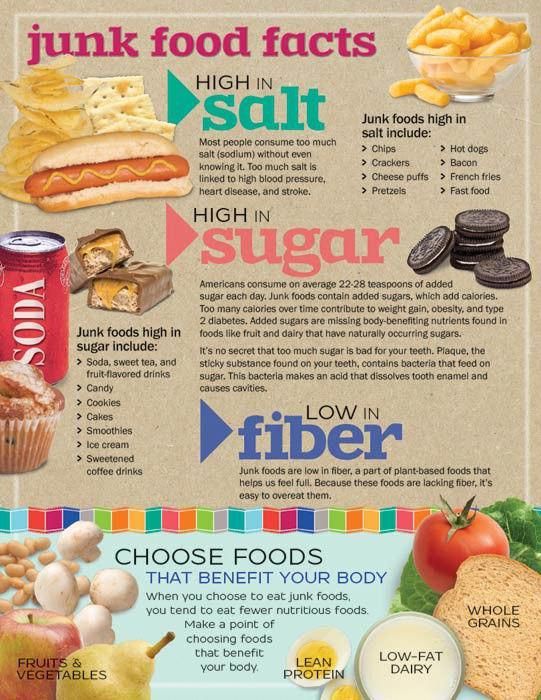
- A varied, balanced and regular diet (including cereals, fruits and vegetables, and other food groups) provides sufficient vitamins, minerals and macronutrients, as well as energy, and reduces the desire to eat something sweet.
- It is very likely that an obese child will grow into an obese adult.
- Increasingly, overweight and obesity are already occurring in young children.
- This risk can be reduced through informed food choices and sufficient exercise.
- With food you need to get as much energy as it is consumed. Therefore, foods rich in energy, but poor in vitamins and minerals (for example, sweets, cookies, buns, cakes, soft drinks, potato chips, etc.) should be eaten as little as possible.
- Food choices should be as varied as possible, including whole grains, vegetables and fruits, as well as berries, unsweetened dairy products, fresh fish, poultry, meat and eggs, nuts and seeds.
- The child must be physically active (in the house and in the yard) for at least 60 minutes a day, even more is better.

- To check whether the child is growing and gaining weight normally, you can look at the growth and weight curve of infants and children, and in case of underweight or overweight, it is imperative to consult a family doctor or pediatrician for further instructions. You can not limit the nutrition of the child, guided by their own ideas.
Kindergarten children often eat out three times a week - breakfast, lunch and dinner.
According to how much time the child spends in kindergarten, how many times and what he eats, it is necessary to form the child's home meals. The body needs to be regularly provided with the necessary amount of energy, so it is important to stick to daily meals.
Keep up to date with the weekly kindergarten menu, make different options for homemade dinners or weekend lunches. Also ask teachers if the child ate in the garden and how much he ate from what was offered, take this data into account when serving homemade dinner.
The more flavors and foods you introduce to your child from an early age, the easier it will be for them to get used to food in kindergarten.
In Estonia, food regulations have been developed in pre-school child care institutions, which are regulated by an order of the Minister of Social Affairs.
Too many meals offered to children often include too much salt or sugar. Children's meals may appeal to children (often due to their high fat, sugar and/or salt content), but their nutritional value is often very low. Instead of children's meals, it is better to choose a regular dish or soup and ask for it to be prepared with as little salt as possible.
Fast foods also tend to be high in energy (and high in fat, sugar and/or salt). For example, from one small cheeseburger, small fries and 250 ml of cola, a child can get about 650 kcal, which is about 40% of the daily energy requirement of a 7-year-old child with an average activity. Salt in this choice contains a little more than is acceptable per day (children aged 2-9 years can receive no more than 4 grams of salt from all sources per day). A soft drink contains just over 25 grams of sugar, which is also more than half of the maximum allowable daily amount of sugars. If you absolutely want to offer such food to a child, this is possible no more than twice a year, and then if the daily diet is in order.
If you absolutely want to offer such food to a child, this is possible no more than twice a year, and then if the daily diet is in order.
- Depending on the age of the children invited to the birthday, when choosing food for the festive table, recommendations for their age can be guided.
- The food offered at the birthday party must be prepared from minimally processed raw materials. The less sweets, soft drinks, potato chips and other similar foods on the festive table, the better. If there is a rich and convenient selection of fruits and vegetables on the festive table, and the children have something to do, the children will not even remember that such food exists.
- First of all, it is great for children (especially if the birthday is not at home, but in some kind of playroom) sliced vegetables, such as carrots, paprika, cucumber and cauliflower with homemade dip sauce made from unflavored yogurt.
- You can offer fruit on a skewer (melon, pear, watermelon, grapes).

- If desired, you can prepare more dense dishes (salads, homemade pizza, etc.), but they must be prepared from minimally processed raw materials.
- If you offer baked goods, try to find low sugar options (raw sugar, agave syrup, etc. are not good alternatives).
- If there are only a few children's birthdays in which the child participates in a year, on this day you can "sin" a little and offer the children a little more food to their taste, for example, meatballs, sausages, oven-cooked french fries, popcorn without salt. But this is again provided that on other days the choice of food corresponds to the recommendations.
- Always read the label on food packaging! This will help you make a more informed choice.
- The allowable amount of supplements for children is usually less than for adults (the maximum amount is based on the body weight of an adult). Therefore, be careful with colored sweets, drinks, cookies with a long shelf life, desserts and sausages, products containing synthetic sweeteners.
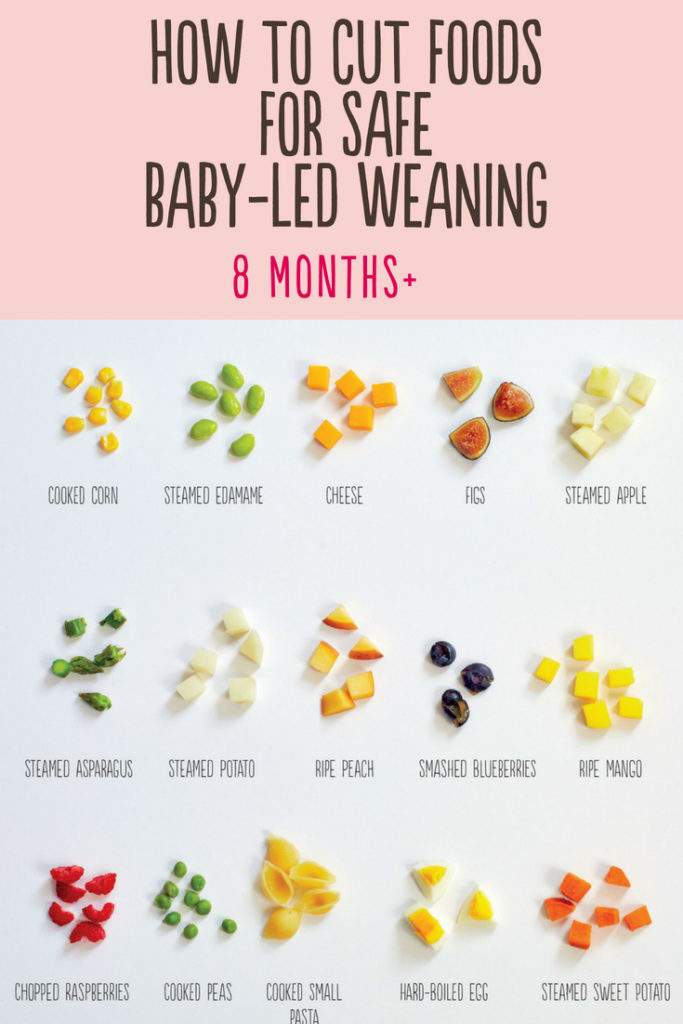
- If the child is old enough to participate in the grocery shopping, let the child choose between suitable foods: one or another fruit, various cereal products, various vegetables, etc.
- Avoid the shelves with sweets, biscuits, soft drinks, etc., so that the child does not have a desire to buy sweets.
- If a child in a grocery store always asks for candy, etc., then it is better to go there without a child or take the child to the store when he grows up and understands what and when is bought in the store.
- Always go to the store on a full stomach, with a shopping list, and avoid impulse purchases.
The less time preschoolers spend watching television and gadgets, the better.
The use of gadgets and watching TV is not recommended while eating, as it diverts attention from eating as a process. In turn, this forms the wrong eating habits in children.
While eating, all attention should be paid to the process of eating.
- The principle of a healthy lifestyle is that the amount of energy received from food and the amount of energy expended are in balance.
- All children should be as active as possible from an early age. Parents themselves should orient their children to the movement, be an example to them.
- The child must be physically active (in the house and in the yard) for at least 60 minutes a day, even more is better.
- Mobility habits formed in childhood are the basis for adult mobility habits.
- If the child is more active (for example, goes to some kind of training), his need for energy is higher due to the energy expended. The additional energy requirement cannot be covered by the energy obtained from sweets and fast food; nuts and seeds can be added to the menu.
- Before eating and preparing food, you and your baby should always be thoroughly washed to prevent possible micro-organisms causing disease from getting into the stomach.







